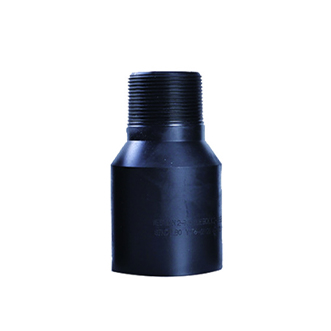- Afrikaans
- Albanian
- Amharic
- Arabic
- Armenian
- Azerbaijani
- Basque
- Belarusian
- Bengali
- Bosnian
- Bulgarian
- Catalan
- Cebuano
- Corsican
- Croatian
- Czech
- Danish
- Dutch
- English
- Esperanto
- Estonian
- Finnish
- French
- Frisian
- Galician
- Georgian
- German
- Greek
- Gujarati
- Haitian Creole
- hausa
- hawaiian
- Hebrew
- Hindi
- Miao
- Hungarian
- Icelandic
- igbo
- Indonesian
- irish
- Italian
- Japanese
- Javanese
- Kannada
- kazakh
- Khmer
- Rwandese
- Korean
- Kurdish
- Kyrgyz
- Lao
- Latin
- Latvian
- Lithuanian
- Luxembourgish
- Macedonian
- Malgashi
- Malay
- Malayalam
- Maltese
- Maori
- Marathi
- Mongolian
- Myanmar
- Nepali
- Norwegian
- Norwegian
- Occitan
- Pashto
- Persian
- Polish
- Portuguese
- Punjabi
- Romanian
- Russian
- Samoan
- Scottish Gaelic
- Serbian
- Sesotho
- Shona
- Sindhi
- Sinhala
- Slovak
- Slovenian
- Somali
- Spanish
- Sundanese
- Swahili
- Swedish
- Tagalog
- Tajik
- Tamil
- Tatar
- Telugu
- Thai
- Turkish
- Turkmen
- Ukrainian
- Urdu
- Uighur
- Uzbek
- Vietnamese
- Welsh
- Bantu
- Yiddish
- Yoruba
- Zulu
well casing extension coupling
Well Casing Extension Coupling Ensuring Structural Integrity in Oil and Gas Operations
In the field of oil and gas drilling, the integrity of wellbore construction is paramount. One critical component that assures this integrity is the well casing extension coupling. This device plays a crucial role in connecting different sections of casing pipes, allowing for a secure and efficient drilling operation while maintaining the overall structural stability of the wellbore.
Understanding Well Casing
Well casing is a series of pipes that are inserted into a drilled well to maintain the well's structure and prevent collapse. It also isolates groundwater from oil and gas reservoirs, protecting both the environment and the resources being extracted. The casing system must endure various stresses, including pressure, temperature fluctuations, and the corrosive nature of produced fluids. Therefore, the materials used for casing and the connections between them have to be robust and reliable.
The Importance of Couplings
Couplings are mechanical devices used to connect two or more casing segments. They ensure that the casing is comprehensive and seamless, minimizing the risk of leaks and structural failures. A well-designed coupling will provide the necessary tensile strength to withstand the forces acting on the wellbore, particularly during drilling and production phases.
When drilling deeper wells or when encountering challenging geological formations, the lengths of casing required may exceed standard sizes. In such scenarios, casing extension couplings become essential. By using these couplings, operators can extend the casing lengths, thus achieving the desired depth without compromising safety and functionality.
Design and Material Considerations
well casing extension coupling

When selecting a well casing extension coupling, several factors must be taken into account, including environmental conditions, the characteristics of the fluids being handled, and the specific requirements of the drilling operation. Typically, couplings are made of strong materials such as carbon steel or stainless steel to withstand harsh conditions.
The design of the coupling must also allow for easy installation and disassembly. Many modern couplings are designed with threading on both ends to facilitate quick connections and disconnections, streamlining the drilling process. Further, some advanced couplings feature integrated locking mechanisms that enhance stability, reducing the risk of accidental separation during operations.
Challenges and Solutions
Despite the advancements in coupling design, challenges remain. One of the primary concerns is the potential for fatigue over time due to the cyclic loading imposed during drilling operations. To mitigate this risk, manufacturers conduct rigorous testing to ensure that couplings can endure repeated stress without failure.
Additionally, corrosion can pose a significant threat to the longevity of couplings, especially in corrosive environments. To address this, oil and gas companies often apply protective coatings or choose couplings made from corrosion-resistant materials.
Conclusion
The importance of well casing extension couplings cannot be overstated in the oil and gas industry. Their ability to extend casing lengths without sacrificing integrity is vital for the safety and efficiency of drilling operations. As innovations continue to improve coupling designs and materials, the industry can expect enhanced performance and reliability in well integrity. Thus, the proactive adoption of advanced coupling technology is essential for operators seeking to maximize operational success while minimizing environmental risks.
-
Tubing Pup Joints: Essential Components for Oil and Gas OperationsNewsJul.10,2025
-
Pup Joints: Essential Components for Reliable Drilling OperationsNewsJul.10,2025
-
Pipe Couplings: Connecting Your World EfficientlyNewsJul.10,2025
-
Mastering Oilfield Operations with Quality Tubing and CasingNewsJul.10,2025
-
High-Quality Casing Couplings for Every NeedNewsJul.10,2025
-
Boost Your Drilling Efficiency with Premium Crossover Tools & Seating NipplesNewsJul.10,2025







